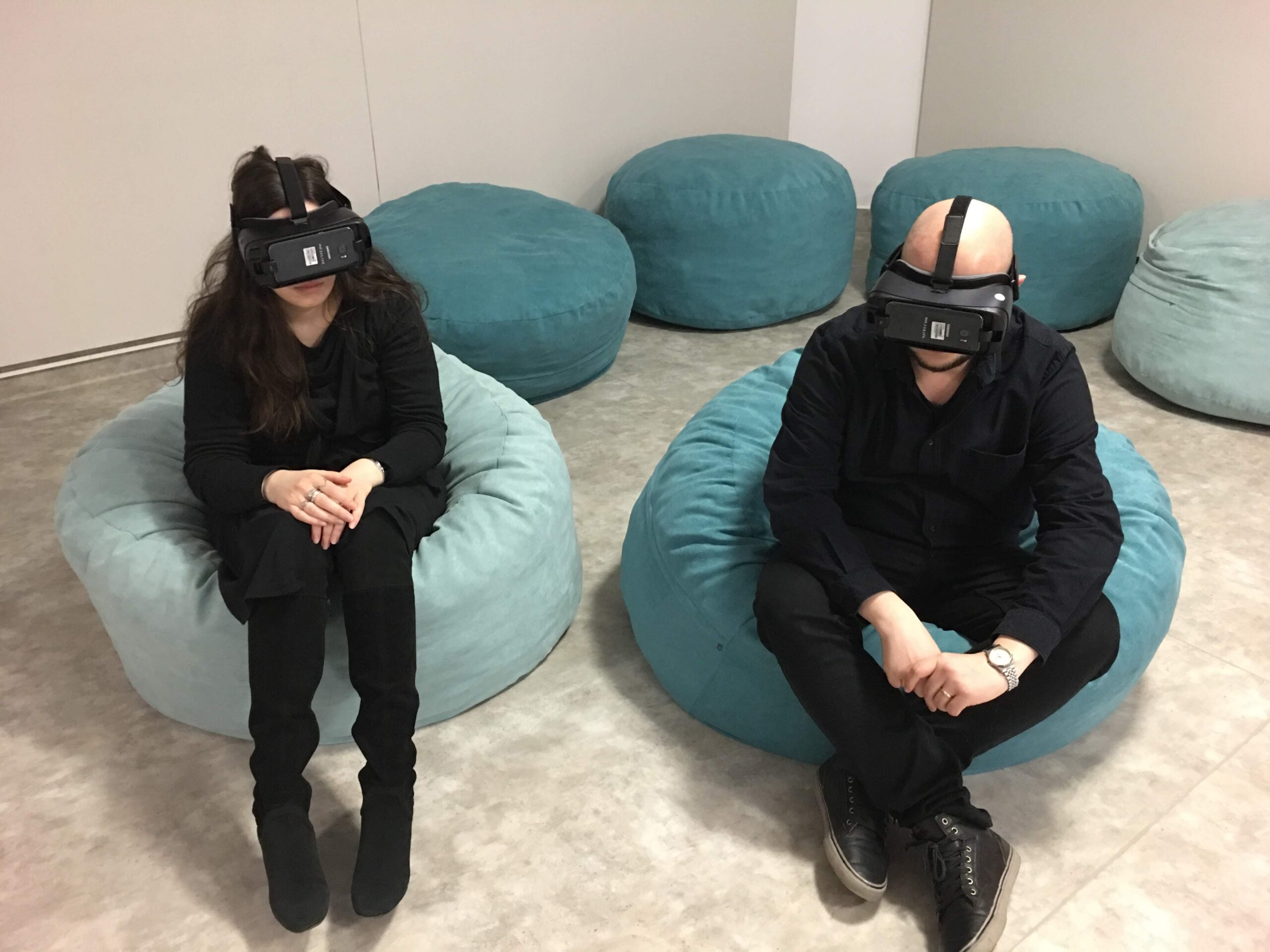Mihai Baba and Daiana Folea run and own Biangle Studio, a business that provides creative services to international clients from Europe and beyond, such as light art, visual and written content creation, product design & management, creative consulting. Mihai and Daiana are from Cluj, and currently, they live here again after having been away for a few years.
As business partners, both participated in an Erasmus for Young Entrepreneurs exchange in the summer of 2013, in Florence, Italy, working in two architectural and design studios run by experienced entrepreneurs.
Before the EYE exchange, their business was catering exclusively to Romanian clients. Since then, they have worked physically and/or remotely with clients from more than ten countries on four continents.
Invited by Fundatia Danis, Mihai and Daiana agreed to reflect on their EYE experiences and answer some of our questions to show other young entrepreneurs what EYE Programme is about and how they could benefit from it.
Why did you want to become entrepreneurs?
We wanted to become entrepreneurs so that we could work on what we liked and how we liked. Also, we were always tempted to invent things, to create new methods and workflows. And we found that being self-employed was the most direct (and riskiest) way of achieving that.
How did you decide to join the Erasmus for Young Entrepreneurs Programme?
For us, the appeal of living in a different country for the first time was instant and self-evident. Thus, we responded to the invitation to apply to the EYE Programme by Fundatia Danis – to whom we were acquainted from a series of workshops they ran at our university.
We quickly learned that it was an excellent decision. The main benefit of the EYE is that you realize there is another (valid) way of thinking other than your own. This gives you a reference against which you can judge all that you’ve been taught and all that you’ve taught yourself.
What were you nervous or concerned about before the exchange?
Our concern was that the funds we would get from the programme would be insufficient to cover our living expenses in Italy. And we were right: we had to (remotely) work on private commissions after-hours to make ends meet. But it was totally worth it!
What challenges did you face during the exchange?
In terms of learning, throughout the exchange, we discovered that what we had been taught in school was not an absolute truth. The Italian approach to design was less technical, more emotional and produced wildly different – and often better – results. We embraced this difference and internalized (read: inhaled!) everything the Italian architects had to show us.
At the personal level, at first, we were appalled by the amount of olive oil Italians used for their food. Everything seemed to be swimming in oil. We soon understood it was just the right amount.
Regarding the practical challenges, finding rent, sourcing bicycles, shopping at COOP, sleeping over the sound of the terazze (terraces) downstairs, catching the morning train and raising our caffeine tolerance were some of the things we still remember after these years. But all these were part of the adventure and therefore quite enjoyable!
How did you benefit from the programme, in terms of professional achievements and personal growth?
We’ve been working at an international level ever since. In fact, it took just six months to go from an all-national client strategy to presenting an artwork in Amsterdam, in front of 700.000 viewers (aggregated), many of which were international tourists.
At the personal level, we gained confidence in our skills – we started to believe, to know that we have what it takes to work internationally. We also gained a taste for international work, we started to actively seek it out, to prefer it over local-only commissions.
Also personal: we learned to drink espresso (not Nescafe 3-in-1) and to appreciate pasta in its true form.
Also also personal: we both got to ride scooters (YAY!), something we hadn’t done before – or since. 🙁
How is your business developing?
Our business develops in ways we couldn’t have imagined before. In ways that only became possible once we went out and tried them. While the Ghost Ship project (see the below video) is temporarily on hold due to the pandemic, we are becoming even more digital and offering new creative services online.
If you have to summarize the primary learning outcomes of the EYE experience, what would you mention?
First, we gained a sense of good taste: in aesthetics, in design, in coffee, in lifestyle. For two months, we became immersed in beauty. The way our colleagues and host entrepreneurs from the Italian studios were working was beautiful. The things they were designing were exquisite. And the vibe in the office was serious, yet exceptionally pleasant. Having gone through this, we’ve come to appreciate (and actively seek out) the finer things in life. It completely transformed our world view.
Second, we learned that things were… possible. Case in point: when dealing with a historic building, our Romanian teachers taught us to hold back, to preserve, to conserve. But in the centre of Florence, almost all the buildings are historical. So not touching them, not modifying them was never a realistic option, lest the city become stuck in time, unable to adapt. Instead, the Italian architects were demolishing walls, replacing them with metal bracings and reconfiguring interiors like they were working with pizza dough. Of course, all this was done with an innate sensibility for aesthetics and deep respect for history.
Would you recommend the experience to others?
10/10!

